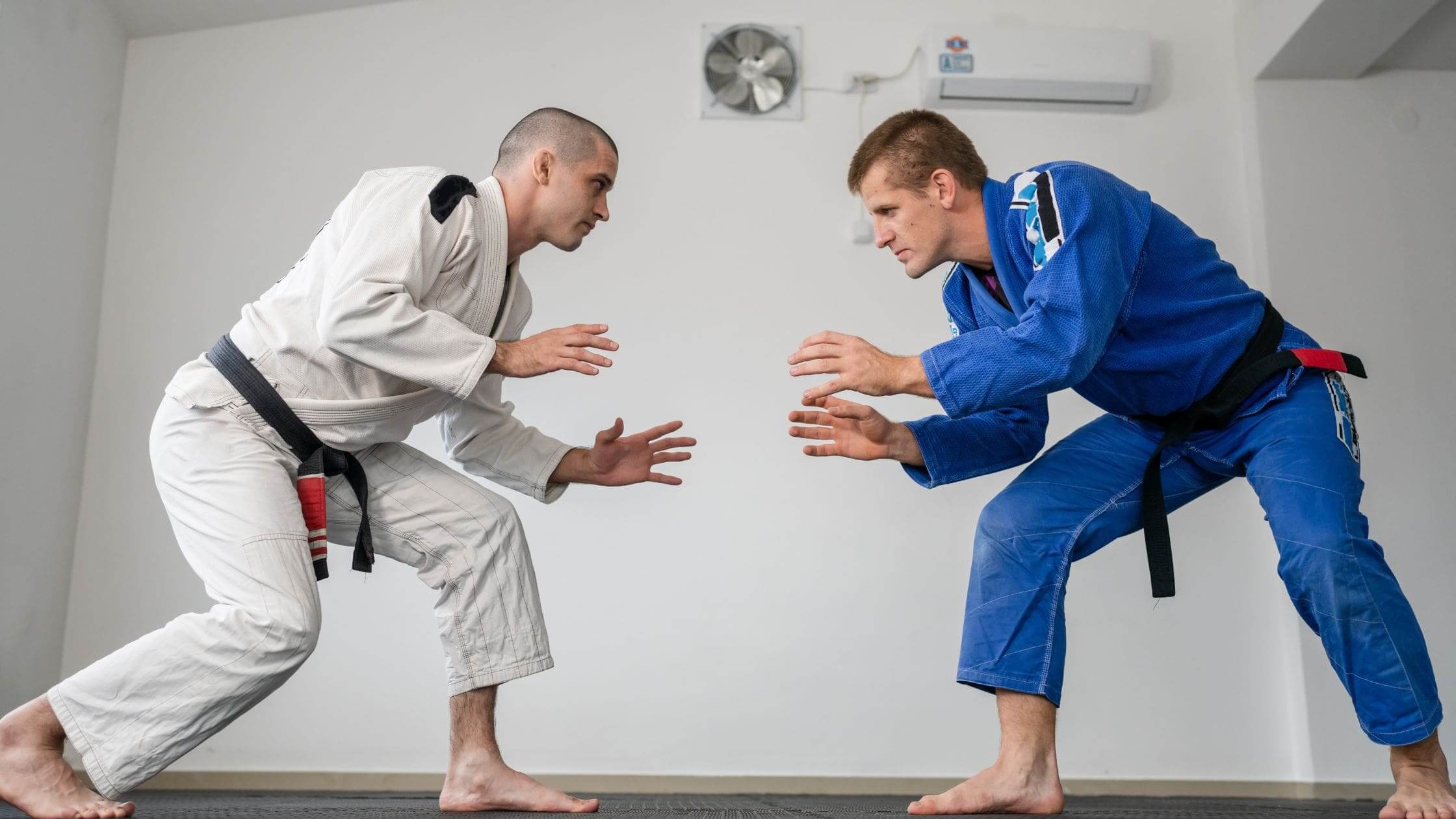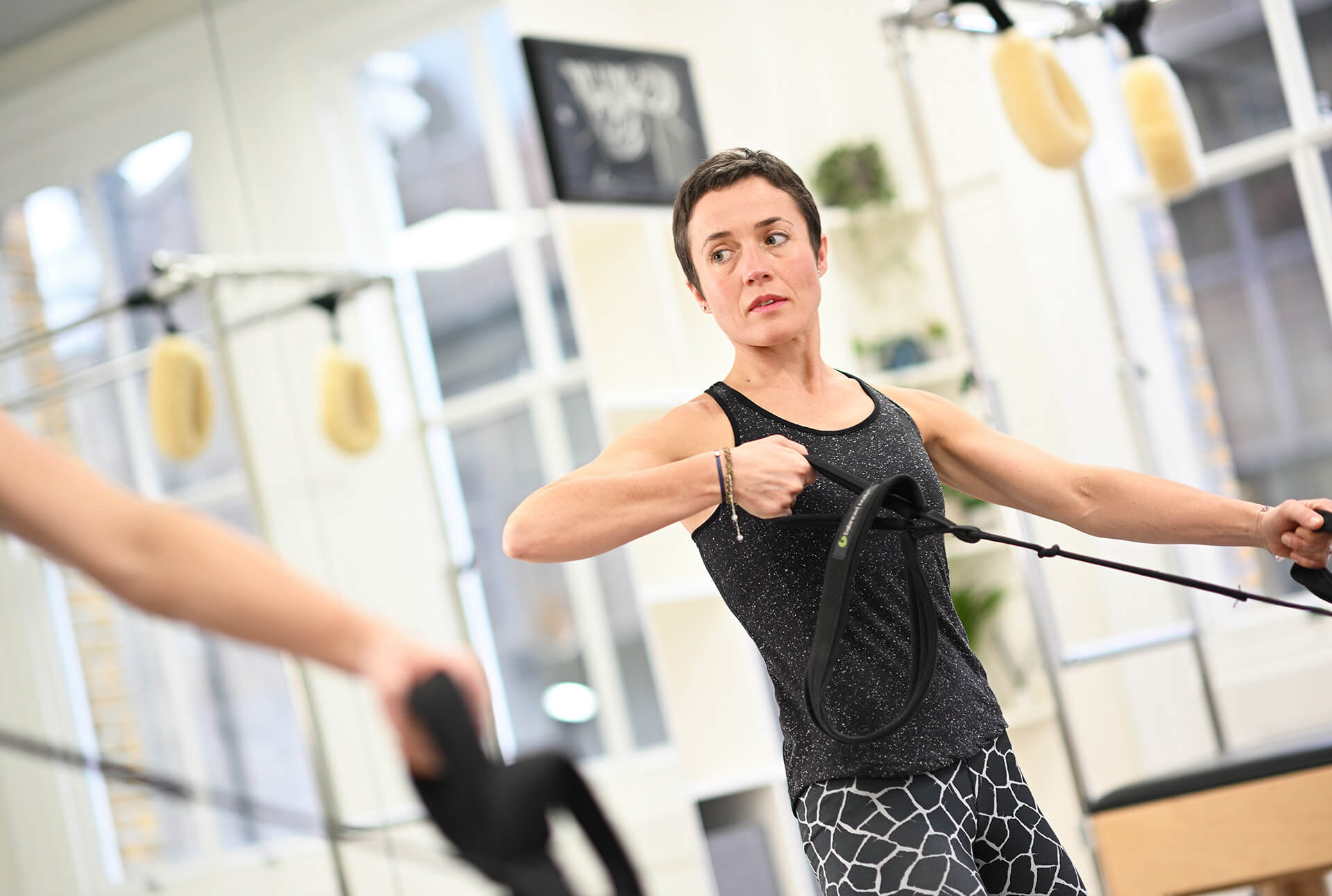Key Contributor: Susie Martin, Chartered Physiotherapist
Are you a keen martial artist? Are you wondering what other cross training you can do to help your performance? Are you picking up martial arts injuries and wondering what you can do to prevent more? Are you wondering how on earth Pilates could help you with your martial art?
Quick Summary
Pilates is method of exercise which is designed for whole body strength, flexibility, breathing and body awareness. It is a great way for martial artists to cross train, and enables the martial artist to work on:
- Body awareness – through the mind body connection
- Precision and control – through repetition and mindful practice
- Joint and spinal mobility – through range of motion exercises
- Flexibility – through active lengthening of muscle, and strengthening of opposing muscle groups.
- Core strength – through abdominal exercises in a variety of different functional positions.
Pilates and Martial Arts
Pilates might seem as far away as you can get from martial arts in terms of exercise but Joseph Pilates, the man who invented Pilates was, reputedly, a boxer himself. He taught himself the fundamentals of anatomy and invented his own body conditioning exercise system, which was the basis of the Pilates we know today.
Whilst most people may be familiar with Pilates as a group exercise that takes place lying down on a mat, many will not know that the full repertoire of Pilates exercises actually takes place on large Pilates equipment akin to gym machines.
The full repertoire of Pilates exercises has a lot more variety than the mat-based classes. Whilst the mat-based exercises have lots to offer the martial artist, the equipment can help to take cross training to the next level.
In this blog, we discuss the benefits of Pilates for martial arts and detail how specifically Pilates can aid training for your martial arts.
The benefits of Pilates for martial arts
Precision
Pilates, like martial arts, is all about precision movement. Indeed, precision is one of the main principles of Pilates. Generally, Pilates should be practiced with attention to the sensations of the body, so that positional awareness (called kinaesthetic awareness) can be developed. This kinaesthetic awareness is key in developing the precision and control of movement that is needed for martial arts, especially ones such as karate, kung fu and Brazilian Jiu Jitsu.
General flexibility
Whilst most people will be familiar with stretching for flexibility, this may not actually be the best way to achieve flexibility for sport. This is because having increased range of motion without having the strength to control the increased range of motion, is potentially a recipe for injury.
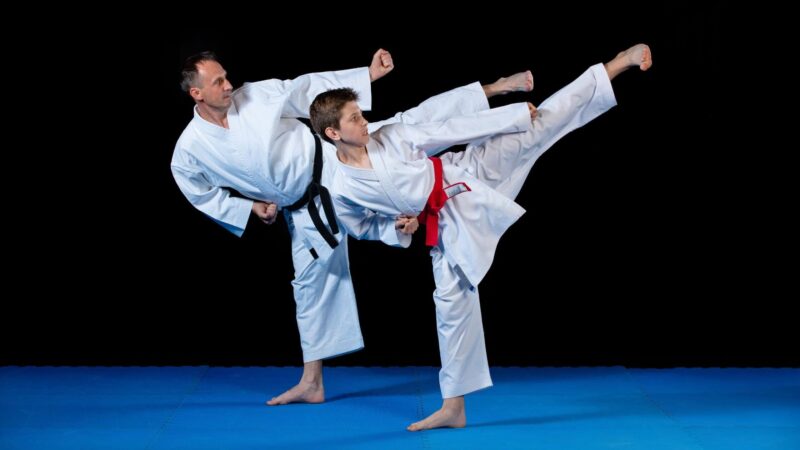
Instead, exercises that focus on muscles lengthening under tension (called eccentric exercise) is important. Much of the Pilates exercise repertoire utilises eccentric movement, allowing us to develop flexibility but with strength.
Hip mobility
Many of the martial arts involve kicking. Some, such as muay thai, tae kwondo and savate involve particularly high kicks, necessitating good mobility through the hip joints, as well as flexibility of the inner thigh and hamstring muscles.
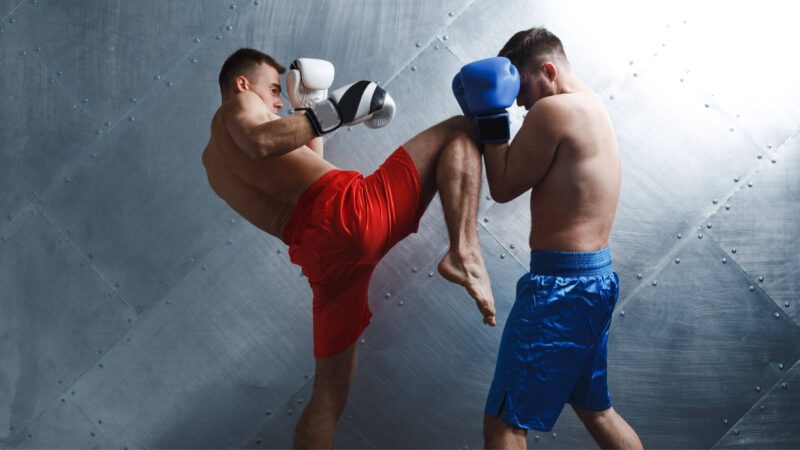
Pilates is a great way to work on hip mobility, ranging from gentle mobility exercises to work on mobilising the joint whilst being able to let go of tension in the surrounding muscles, such as bent knee opening and side-side to equipment exercises such as Feet in Straps on the reformer that allows you to gradually work up to a full range.
Equipment exercises such as the Russian Splits and the Sidewards step down on the chair combine strength with mobility.
Spinal mobility
It’s easy for martial artists to neglect to include spinal mobility in their general flexibility, thinking more of shoulder and leg stretches as necessary. However, including spinal mobility in your training will help to distribute forces throughout the body, which is helpful for injury prevention.
Upper back mobility will help with achieving enough rotation for punching and kicking, and lower back side bending will help with high kicks, and manoeuvrability for grappling.
For boxing and muay thai, so much time is spent hunched forward to hold your guard position, upper back extension exercises can help to balance the body and counteract the effects of being curled forwards for much of the time.
Rotational strength
Many martial arts, apart from grappling, involve punching and punching is most powerful when the forces can be transmitted through the whole body and not just the arm. Exercises that train trunk strength will improve your ability to transfer power from the legs to the upper body. Exercises for the torso that train strength in rotation are key for this.
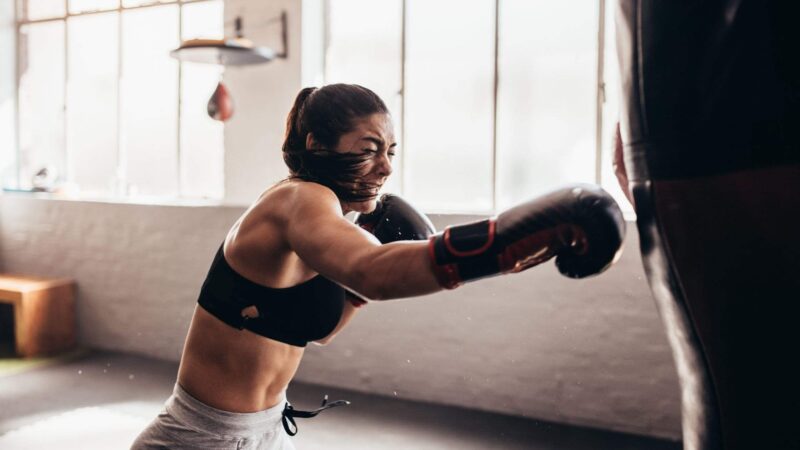
Often people think of sit ups and planks, when they think of training their ‘core’ but these neglect rotation and planks, for example are quite static. Pilates gives us options for dynamic rotational training, such as criss-cross and single leg stretch (see below) on the mat.
On the equipment, the roll down series with rotation, teaser in extension and rotation and the side arm series on the reformer can also help with rotational strength. On the trapeze table, the punching variations of the standing arm series are a great way to work on the rotational muscle groups – only this time resisting rotation.
Abdominal strength
For grappling martial arts, such as brazilian jiu jitsu, a lot of the action takes place on the floor in a curled-up position, so developing the abdominal strength to sustain this position is important. Assisted chest lift, single and double leg stretch are great exercises for this.
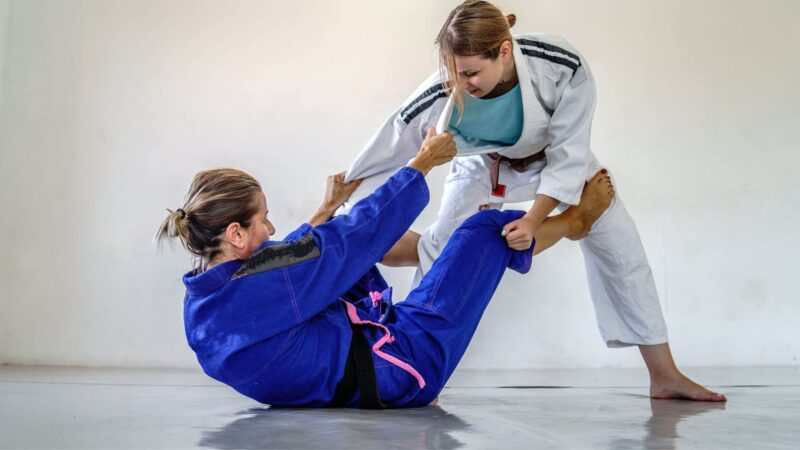
Leg strength
Pilates is great for developing strength for the muscles that other exercises might not reach! Bridging is a great functional exercise for flipping your opponent in hold when grappling, and many Pilates exercises such as parakeet, and frog lying flat develop the hamstring strength necessary for leg holds in grappling. Seated leg extension on the reformer, and forward lunge on the chair build quadriceps strength for front kicks.
Our top Pilates Exercises for martial arts
Criss Cross
This exercise is great for developing that rotational strength that is so important for generating power when punching. Our director Helen, talks you through proper technique in detail so that you can get the best results from this exercise.
Side Side
This is another exercise for working on rotational strength – but this time focussing on the lower abdominals and their connection with the lower body. The feet down variation is a great way of gently mobilising the hips.
Single Leg Stretch
Similar to criss cross, this exercise is great for abdominal strength and has a little more focus on the chest lift component of abdominal strength, so although this is a great all round exercise so great for grapplers. Our director Helen, talks you in detail through proper technique so that you can do this exercise effectively.
Bridging
This single leg bridge is a progression of a double leg bridge. The single leg bridge means each leg has to work twice as hard. Pressing the hips up into the end range position will help build strength in a range which is lacking for most people and will help with breaking an opponents hold during grappling.
Prone Press Up
This is a great introductory exercise if you rarely work on your spine extension. This exercise teaches you awareness, and an understanding of how to get equally distributed movement through your spine, rather than just moving from the part that is the most mobile already. Spine extension is important for grappling martial artists, but for anyone wishing to work on their spinal rotation range, this will also help.
Thread the Needle
This exercise is brilliant for working on your upper back mobility. This will help to give you the rotation range to make punching easy.
Hundreds
This exercise was the classic Pilates exercise that Joseph Pilates developed to work on endurance of the abdominals – or what he called the Powerhouse.
Russian Splits on the Reformer

This exercise gives a taster of the additional scope that Pilates equipment can give you for training. These are great exercises for working on leg flexibility for those martial arts which use high kicks such as muay thai, and tae kwondo. These exercises require eccentric control in the flexible ranges, and so they don’t just train flexibility at the expense of strength.
Dolphin on the Trapeze Table
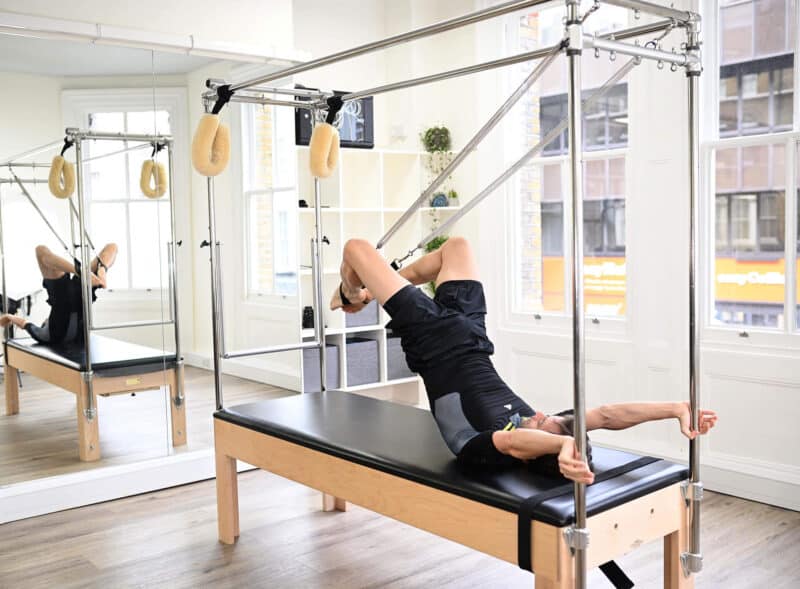
Dolphin is a great exercise for challenging hamstring strength, especially in a static hold, which will be great for grappling. In addition, this helps to work on dynamic spinal mobility which is an asset for any martial artist.
Are you intrigued to know whether Pilates can help you strengthen and balance your body for martial arts? You can book a session with one of our highly trained Pilates instructors and find out in person.
FAQs
Can Pilates help with karate?
As previously discussed, Pilates helps to train spinal mobility to enhance punching and rotational core strength to provide the power for punching. As well as this it has many options for training hip mobility and leg flexibility. Specific to karate, a low, wide stance is needed which requires hip rotation mobility and inner thigh flexibility. It also requires ankle mobility, which exercises such as Footwork, Achilles Stretch on the chair, and Assisted Squats can help with.
Can Pilates help with muay thai?
Yes, Pilates can definitely help with muay thai. Pilates will help train core strength, but without sacrificing the ability to move, in the way that heavy strength training might. In addition, there are loads of exercises that will help with hip joint mobility, and inner thigh and hamstring flexibility which is important for kicking range.
There is even a jumping exercise on the reformer which will train the propulsive action for jumping kicks and keeping you light on your toes.
How often should I do Pilates?
How often you should do Pilates depends on the type of session that you are doing. If you are choosing to work with the most challenging exercises you might need to incorporate recovery time into your routine, so anywhere between two and five times a week, and taking into account what other exercise you are doing.
If you are doing more gentle mobility sessions, there is no limit to how much Pilates you can do, but it helps to listen to your body.
Whichever type of Pilates you are doing, for optimum results you should aim to incorporate more than one session a week. However, consistency is most important, so you need to choose a frequency that fits with your routine and that you can stick to.
Feeling inspired?
If you want to experience the Complete difference and discover the benefits of one-to-one Pilates, book a session at one of our London studios or online today.
Our physiotherapist-led Pilates studios in Chelsea, our Angel Pilates studio and our Pilates studio in City, offer a highly tailored approach to your Pilates training, whether your goal is to manage a health condition, rehabilitate from an injury or to improve your strength and fitness.
Get in touch with us via email or contact us on 0203 764 5668 for further information.
Education is key:
These blogs are designed to give information to everyone, however, it is important to remember that everyone is different! If you have not seen one of our therapists and have any questions about injuries, what you have read or whether this may be useful to you, please just ask. We are more than happy to help anyone and point you in the right direction. Our biggest belief is that education is key. The more you understand about your injury, illness and movement, the more you are likely to improve.


